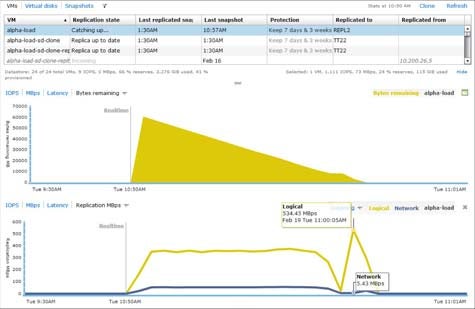While it’s relatively easy to move virtual machines from one data center to another, moving the data associated with that data center is a whole other issue. Not only is it a challenge to move terabytes of data across a network, the performance of any applications running on top of a virtual machine trying to access data across a wide area network quickly degrades.
Looking to rise to that challenge, Tintri, a provider of storage systems specifically designed for virtual machine environments, today released an upgrade to the Tintri storage operating system for virtual machine environments that adds support for a ReplicateVM technology that simplifies the management of virtual machine migration.
According to Geoff Stedman, vice president of marketing for Tintri, organizations need to reduce the complexity of storage management in highly dynamic virtual machine environments. Tintri OS 2.0 addresses these issues by not only including virtual machine replication and cloning technology, but also managing the actual movement of data between virtual machine environments. After the initial migration is made, Stedman says Tintri OS then transfers only the delta changes needed to make two virtual machine server environments consistent.
Stedman says the overall purpose of Tintri is to allow IT administrators to manage storage at a higher level of abstraction, versus having to manually manage LUNs and individual volumes on storage systems that are allocated to specific applications.
In addition, Stedman notes that ReplicateVM makes it easier to reconstruct a virtual machine from a gold image, versus spending time trying to reconfigure an existing virtual machine. In effect, Stedman says ReplicateVM can turn virtual machines into disposable IT assets.
As part of the shift towards software-defined data centers, Stedman says it’s only a matter of time before organizations more aggressively adopt more progressive approaches to storage management. Whether those systems are managed by administrators of virtual machines or dedicated storage specialists will vary by organization. But in either scenario it is becoming clearer that at least within the context of virtual server environment we’re starting to see significant progress in terms of finally making it easier to manage complex storage environments.



